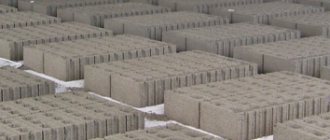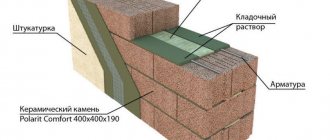Organization of a mini-brewery
How to open a microbrewery? Before you organize your brewery, you will need to select a room for making the drink. It should be spacious, as an exception - a home brewery, which does not involve the production of large volumes of product.
Theoretically, this can be organized, but it turns out to be unprofitable in terms of financial investments.
To create a full-scale beer business, you need to produce approximately 100 liters of beer per day. Regarding registration of a case, it is difficult to clearly determine the required set of documents, since beer production in some regions is subject to licensing, while in others this is not necessary. Therefore, before opening your own beer business, it is recommended to consult an experienced lawyer.
Business registration
- If you want to organize an independent mini-brewery in order to sell your own beer, you must legally register your own business with the relevant authorities: tax, SES, PB.
- First of all, you need to determine the legal form of the future enterprise. For a home beer business, the most optimal case is an individual entrepreneur (individual entrepreneurial activity). The paperwork process in this case is carried out quite quickly, and a simplified taxation system is applied to the entrepreneur.
EQUIPMENT FOR BEER PRODUCTION - STEPS AND TECHNOLOGY
produces CCT, forfas, brewing units and other equipment for brewing.
We can offer equipment for breweries of various capacities - from small private breweries to large manufacturers. We can produce both small CCTs and prefaces with a volume of 1 m3, as well as huge tanks with a volume of 100-200 m3. All equipment is manufactured using automatic welding processes. Welded stainless steel cladding is used to protect the thermal insulation. We are able to weld thin metals so as to maintain a beautiful surface. No wonder welds are a calling card.
RAW MATERIALS
For hundreds of years, the composition of classic beer has not changed; its production requires only four components: water, yeast, hops and malt. To produce malt, sprouted barley seeds are first moistened and chemical changes occur in the grain. Why is it dried to stop germination and preserve the resulting enzymes necessary for the production of beer. Our company produces large-volume stainless steel containers, and installation can be carried out on site. More than 15% of the cost of capacitive equipment are transportation costs; such costs can increase several times if the product has non-standard overall dimensions. To avoid this, the components are manufactured in our factory and delivered piece by piece to the installation site, where they are assembled by our specialists. This technology, in addition to saving the customer money, allows maintaining the high quality of finished containers, as well as reducing the time required to commission the enterprise.
BEER PRODUCTION STEPS
We have already mentioned the components of beer, but we want to draw your attention to the importance of all components without exception, or rather to their quality. You can choose malt, hops, yeast to your taste and even supply them from abroad, change them depending on the recipe. But with water it’s a little more complicated; in brewing this is an important factor that will affect both the cost of beer and the quality. In different regions of the planet, water has different composition. There are many technologies for purification, water softening and... For detailed advice, it is better for you to contact our specialists, especially if you plan to build a large brewery.
From the silos, the grain goes into the Bunker on the brewery floor, some beer recipes use several types of malt and before it goes any further, it is carefully examined again in the laboratory. They find out its physical and chemical composition, examine its proportions, enzyme activity and acidity. They carefully check everything: what this mixture is capable of, determine the size of the grain, the amount of extractive substances that will pass from the malt. Quality is controlled until the very end. Therefore, samples at all stages of production are sent to the laboratory, where the clarity of the drink and its saturation with carbon dioxide, the amount of active substances and alcohol in the finished beer are determined. The results of laboratory tests are checked and sent to a huge vibrating sieve - this is the last stage of mechanical cleaning; impurities that could have entered the grain during transportation are eliminated here.
SPLITTING UP.
Next, the malt is sent to the first stage of brewing production. At the beginning of the production cycle of any beer, both light and dark, the malt is crushed so that during cooking, the extractive substances are more likely to pass into the water. This is done in a malt crusher.
MALT CRUSHER
To speed up the further dissolution of extracts from grains that are crushed unevenly, the grind size must be checked periodically. As a result of crushing, flour, grits of different sizes and husks are obtained, which is also useful at one of the stages of production. Crushing occurs using shafts, the distance between which is less than the grain size. The proportions and degree of grinding differ for different types of beer.
Profitability of the beer business
To create a mini-production at home, you will need relatively small investments. This makes this field of activity very profitable and tempting for young entrepreneurs. The payback period for an average beer business is about one or two years.
The main advantage: the ability to organize a mini-production with its subsequent expansion.
Profitability of a microbrewery
- Profitability – 40 percent.
- Payback period: 1.5–2 years.
- Monthly income – 600,000 rubles. with the cost of a glass of beer 0.5 l - up to 200 rubles.
- Investments in the first year of operation - up to 4 million rubles.
- Profit in the first year, taking into account taxation – 2.5 million rubles.
- Income for the second year – up to 5 million rubles.
Micro brewery profitability
- To make 50 liters of beer you need 3-4 cans of concentrate, 15 g of brewer's yeast, 2 kg of sugar.
- Investment in a microbrewery ranges from $2,000 to $7,000.
- Production profitability is 40 percent.
- Payback – 2.5 months.
Beer line
products » Lines » Beer line
Beer is a low-alcohol drink. It is obtained by alcoholic fermentation of malt wort, most often barley, with the help of brewer's yeast and, usually, with the addition of hops. Beer is considered the third most popular drink (after water and tea). And the most popular alcoholic drink in the world. There are about a thousand types of beer. It is distributed in many countries and the taste characteristics of different varieties can vary greatly. Just like the alcohol content ranges from 5 to 9%, there are also types of non-alcoholic beer.
Beer production includes technological processes such as malt and wort preparation, wort fermentation, aging and filtration, and bottling.
“SIP-wash (CIP)” (from 100 to 30,000 l)
During the technological process, direct flushing of pipelines, hard-to-reach parts or closed devices and containers is often impossible due to their design features or the way the lines are connected. In such cases, in-place washing stations, also called CIP washes, are used. All SIP washers have a similar design and operating principle. By pumping cleaning solutions through the equipment that needs cleaning, they wash it. There may be several solutions. Each has its own preparation system and capacity. There is control over the concentration of solutions, their temperature and other parameters of the washing operation. A modular type layout is often used. In this case, one set of dispensers and containers can be alternately connected to different process modules.
Beer production technology.
Crushing malt and unmalted raw materials is used to maximize the transfer of extractives into the wort. Initially, they are cleaned of possible dust and germ residues using a polishing machine and an air-sieve separator. To remove metal impurities, an electromagnetic separator is used. Crushers are used to grind dry raw materials.
In order to obtain beer wort, mashing is carried out - a three-stage process that includes mixing crushed raw materials with water, heating and maintaining within a given temperature range. The process is carried out in a mash apparatus with the stirrer turned on. Further mashing can be done using the infusion or decoction method.
The infusion method involves keeping the mixture at a certain set of temperatures until complete saccharification. The mash is then filtered. The wort is enriched with enzymes, amino acids and maltose. It contains little dextrins, which enhances its fermentability.
The advantage of the decoction method is a higher extract yield. Since in this case the mash undergoes not only fermentation, but also boiling.
There are two phases in the saccharified mash: liquid or beer wort and solid or grain grains. They are separated using filtration. The spent grain is then leached to extract the extract it contains. The wash water and wort must be clear, which ensures high quality beer. When filtering, the specified temperature regime is also adhered to.
Boiling wort with hops results in a decrease in viscosity and an increase in color.
The separation of wort and spent hops is carried out in a hop separator, where the spent hops are retained on a sieve and then washed with hot water. The separated wort is transferred to a collection tank using a centrifugal pump for cooling and clarification. The wash water and wort are then mixed in a wort brewer.
Cooling and clarification of the wort. The purpose of cooling and clarifying the wort is to remove from it, using low temperatures of 6-16 degrees C, suspended particles and proteins that precipitate from thin suspensions. The wort actively absorbs it from oxygen-saturated air. At higher temperatures, it can oxidize the organic components of the wort, which can lead to a decrease in hop aroma and the appearance of hop bitterness, as well as darkening of the wort. Evaporation of a certain amount of water leads to a decrease in volume and an increase in the concentration of the wort.
The process by which wort becomes beer is alcoholic fermentation.
.The chemical composition of the wort changes significantly as a result of its fermentation and a tasty and aromatic drink is obtained - beer. Fermentation takes place in two stages - main fermentation and secondary fermentation. As a result of the first stage, young (cloudy) beer is obtained, which, due to its unique aroma and taste, is not yet suitable for consumption. During post-fermentation, the beer matures and it acquires the necessary consumer characteristics.
Beer is clarified to give it a marketable appearance. It is separated and filtered, subjected to carbonization and kept in collections for 6-8 hours.
The last stage of pre-sale preparation is its bottling into consumer packaging.
Beer production line. (option)
| Beer production line. Equipment for beer production. | |
|
|
Technological diagram of beer production (option)
1 - receiving hopper; 2 — elevator for malt; 3 — automatic scales; 4 - malt auger, 5 - polishing machine; b - crushed malt bunker; 7 — elevator for polished malt; 8 - magnetic estrus; 9 — crusher for malt; 10 - collection for mixing malt with water. 11 — mash pump; 12 - for mountain boilers; mash and rinse water pump; 14 - filtration tank; 15 - pump for cloudy wort 16 - wort boiler; 17 - pump for grains; 18 — collection of washing water; 19 — hop filter; 20 - pump for hot wort; 21 - hot wort collection; 22 — separator for hot wort, 23 — plate cooler for hot wort; 24 - bath for washing separator parts; 25 - wort sterilizer for pure yeast culture; 26, 27 — fermenters; 28 - tank (tank) for pure reproduction; yeast cultures, 29. 30 - fermentation tanks (vats) (single- and yavkhza mountain). 31 - pump for pumping green beer; 32 - monju vacuum collection - for working yeast; 33 — vacuum pumps: 34 — tank for chilled water; 35 — monju vacuum collector for waste yeast; 36 - filter press for waste yeast; 37 — tank for sweet beer; 38: 39 - camp tanks (small and large); 40 — mixing lantern 41 — pump drukragler 42 — beer separator; 43 - beer cooler. 44 — carbonizer; 45 - collections of filtered beer; 46 — bottle washing machine: 47 — rejection screen; 48 - brewing machine, 49 - capping machine, 50 - rejection machine. 51 - ethical gyratory machine, 52 - monzhek for high-quality beer. 53 - collection for liquid yeast. 54 - pump for alkali and antiformin; 55 — tank for concentrated alkali 56 — collection for antiformin; 57 - collection for alkali 58 - filter for alkali. 59 — syringe for rinsing barrels, 60 — automatic barrel washing machine 61 — isobaric apparatus; 62 — chain hoist air lift; 63 — conveyor for cullet; 64-71 — plate conveyors 72 — mechanism for turning boxes 73 — chain conveyor; 74 — unloader; 75 sluice gate.
Technological diagram of beer production (option)
1 - malt bunker; 2 — polishing machine; 3 - elevator. 4 - magnetic device; 5 — automatic scales; b - crusher; 7 - crushed malt bunker; 8a and 86 - mash boilers; 9 — decoction pump; 10 - filtration tank, 11 - wort boiler; 12 - hop separator; 13 - pump; 14 - collection; 15 - wort separator; 16 - heat exchanger; 17 — fermentation tanks; 18 — apparatus for pure yeast culture; 19 - yeast collection; 20 - green beer pump; 21 - camp tanks; 22 - finished beer pump; 23 - separator; 24 - filter press; 25 — cooler; 26 - collection of filtered beer.











